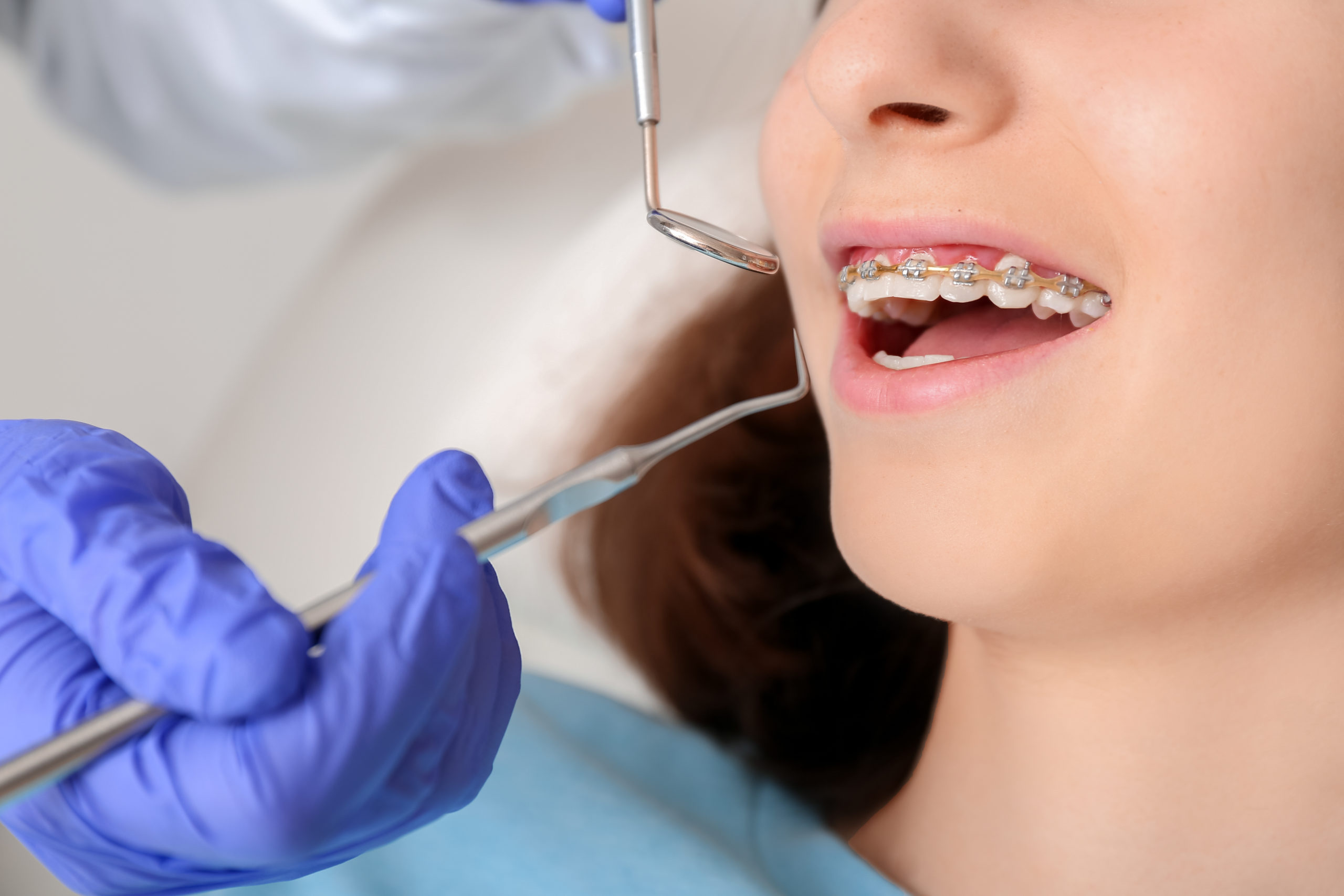How Cumming Orthodontics Addresses Common Braces and Invisalign Problems
How Cumming Orthodontics Addresses Common Braces and Invisalign Problems
Blog Article
Comprehensive Guide to Orthodontics Procedures for Dealing With Oral Misalignments
In the realm of orthodontics, the journey to attaining a completely lined up smile includes a myriad of treatments tailored to correct oral imbalances. From conventional braces to undetectable aligners and also surgical options, the area of orthodontics supplies a series of remedies to attend to varying degrees of oral abnormalities. Recognizing the ins and outs of each procedure, including their systems, benefits, and possible disadvantages, is critical in making educated decisions regarding one's orthodontic therapy. As we navigate via the detailed guide to orthodontic procedures for dealing with dental imbalances, the elaborate details of each method will certainly unravel, dropping light on the path toward a useful and unified oral alignment.
Orthodontic Procedures Introduction

Normal changes and surveillance are crucial components of orthodontic treatment to ensure progression is on track and to make any kind of necessary adjustments along the way. By going through orthodontic treatments, people can not just attain a straighter smile however also enhance their overall oral wellness and feature.
Traditional Braces: Just How They Work
When taking into consideration orthodontic treatments for oral imbalances, traditional dental braces stick out as a time-tested approach for dealing with teeth positioning. Typical braces include braces, cords, and bands that collaborate to apply continuous stress on the teeth, slowly relocating them right into the preferred alignment. The brackets are affixed to the teeth utilizing a special adhesive, and the cables are threaded with the braces. By readjusting the stress of the wires, orthodontists can manage the instructions and pressure applied to each tooth, assisting them right into appropriate positioning in time.
As stress is used to the teeth via the dental braces, the bone bordering the teeth is reshaped to support the brand-new tooth settings. Clients will need regular adjustments at the orthodontist's workplace to make certain the dental braces proceed to use the correct pressure for effective teeth motion.
Unseen Aligners: Benefits And Drawbacks
These clear, personalized trays are basically unseen when used, making them an appealing option for people seeking a more cosmetically pleasing orthodontic treatment. Clients can get rid of the aligners prior to eating or cleaning their teeth, decreasing the risk of food obtaining stuck in the home appliance and simplifying the cleansing procedure.

Surgical Orthodontic Options
Surgical treatments in orthodontics present feasible options for attending to intricate dental misalignments that might not be effectively solved through traditional orthodontic therapies. While invisible aligners and standard dental braces can fix several orthodontic problems, specific situations need surgical intervention to achieve optimal results. Surgical orthodontic options are usually suggested for serious malocclusions, considerable jaw disparities, and instances where the underlying bone framework requires alteration to attain correct positioning.
One usual medical orthodontic treatment is orthognathic surgical procedure, which entails rearranging the jaws to correct functional issues such as difficulty talking or eating. This surgical procedure is usually executed in partnership with an orthodontist who helps straighten the teeth prior to and after the procedure. Surgical orthodontics might additionally include procedures to expose influenced teeth, eliminate excess gum tissue, or reshape the jawbone to develop a much more harmonious face account.
Prior to thinking about surgical orthodontic alternatives, individuals go through a detailed assessment to establish the need and prospective benefits of such interventions. orthodontist. While surgery may appear daunting, it can dramatically boost both the feature and visual appeals of the smile in instances where traditional orthodontic treatments fail
Retainers and Post-Treatment Treatment

Failure to conform with post-treatment treatment guidelines can result in regression, where the teeth progressively relocate back in the direction of their initial positions. Consistent retainer wear, good oral hygiene, and regular dental examinations are vital for preserving the outcomes attained via orthodontic surgery and guaranteeing the long-lasting security of the remedied oral placement.
Conclusion
Finally, orthodontic treatments offer different alternatives for fixing dental misalignments. Typical braces utilize steel braces and cords to change teeth into appropriate placement. Unnoticeable aligners supply an even more very discreet choice but may not appropriate for all cases. Surgical orthodontic choices are readily available for more severe misalignments. Retainers are commonly used post-treatment to maintain the new alignment. In general, orthodontic procedures can successfully improve dental wellness and aesthetic look.
As we browse through the thorough guide to orthodontic treatments for fixing oral misalignments, the detailed details of each approach will unravel, shedding light on the course towards a harmonious and useful dental positioning. - cumming orthodontist
One of the most common orthodontic treatments is the usage of braces, which are composed of steel brackets and cords that use mild pressure to slowly change teeth into the preferred placement.When considering orthodontic treatments for oral misalignments, conventional dental braces stand out as a reliable method for remedying teeth placing. Additionally, undetectable aligners might not be appropriate for intricate orthodontic concerns that require more considerable article source teeth activity, as they are generally suggested for light to moderate cases. Retainers are tailor-made orthodontic tools made to hold teeth in their fixed placements after the completion of orthodontic treatment.
Report this page